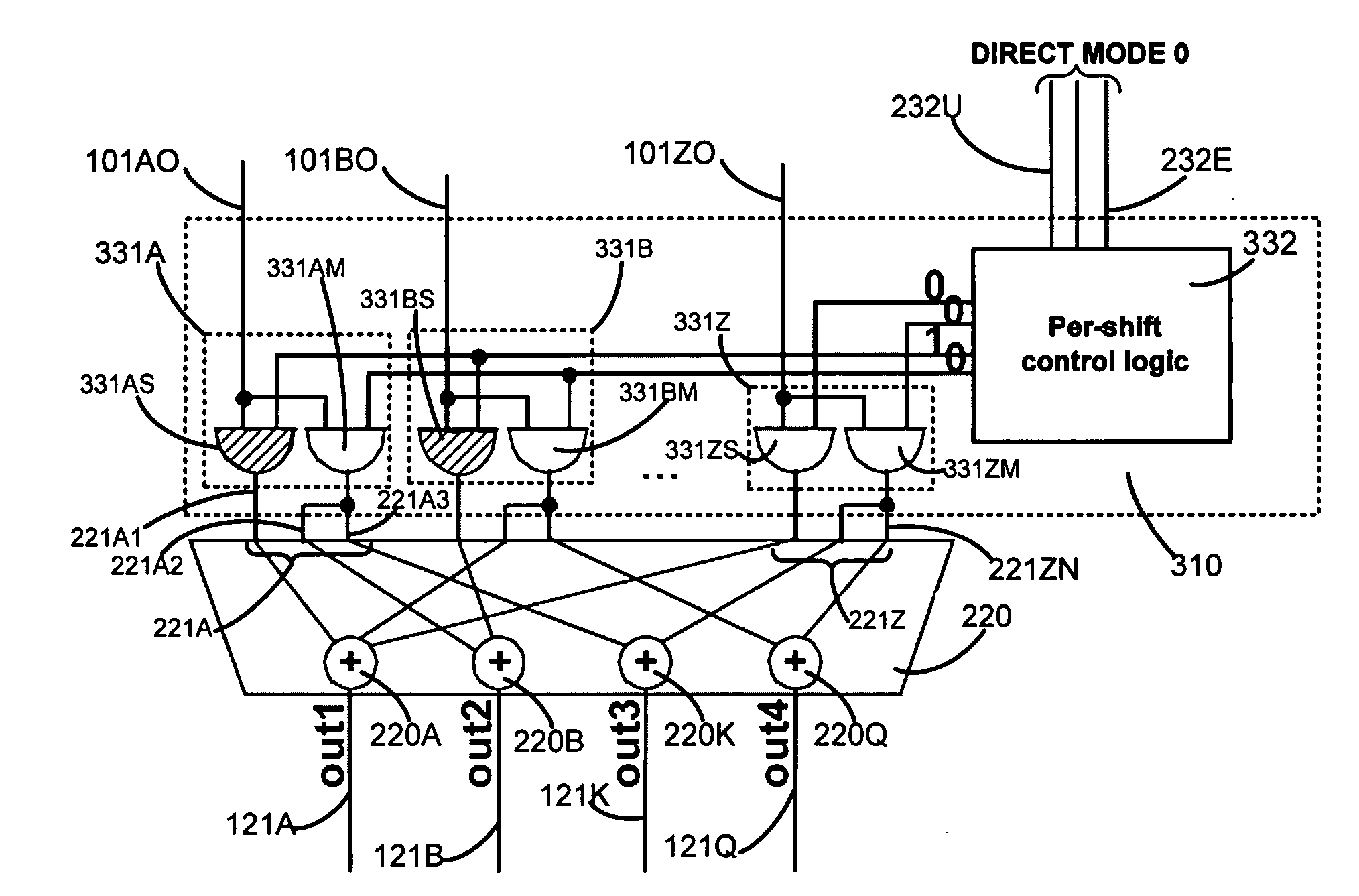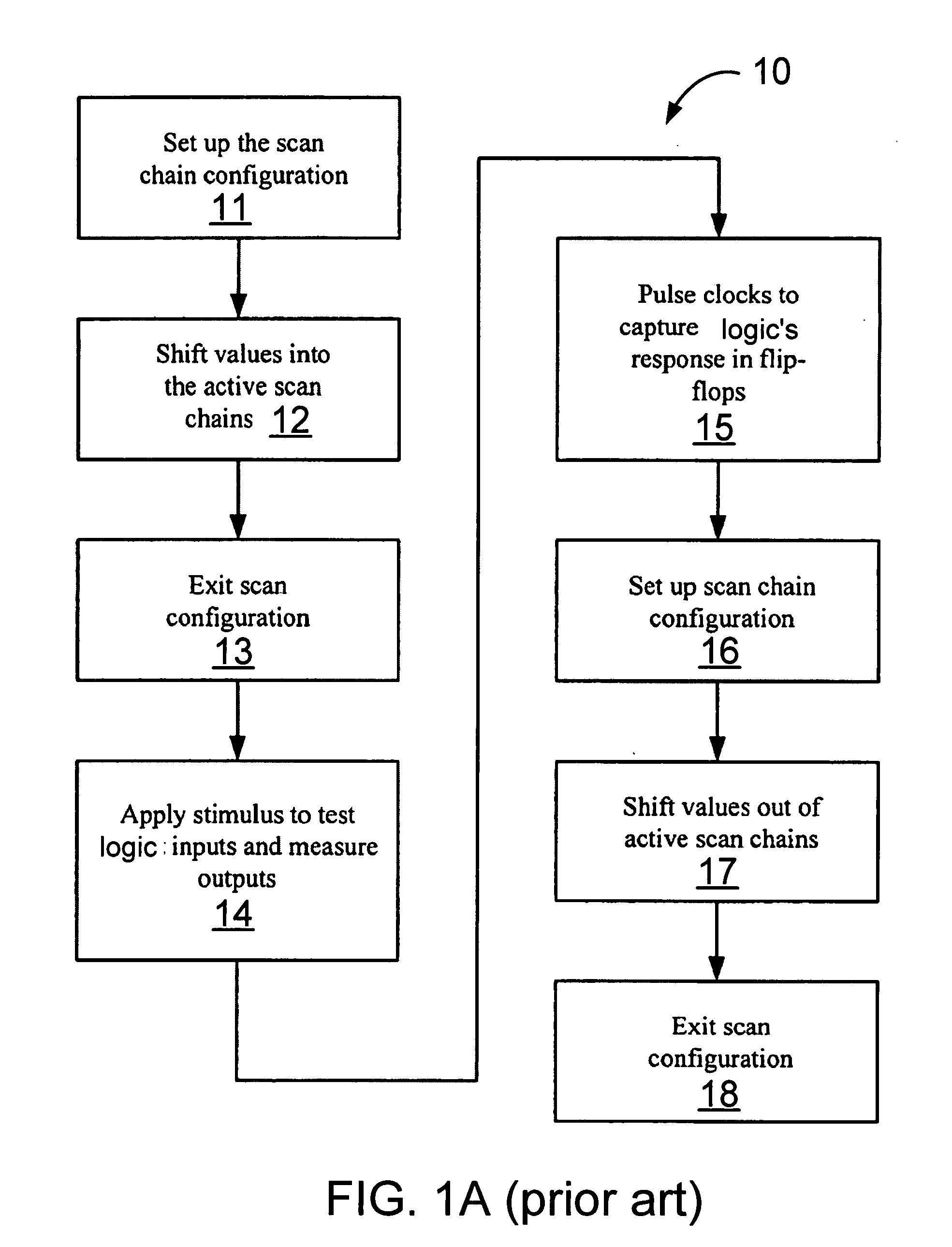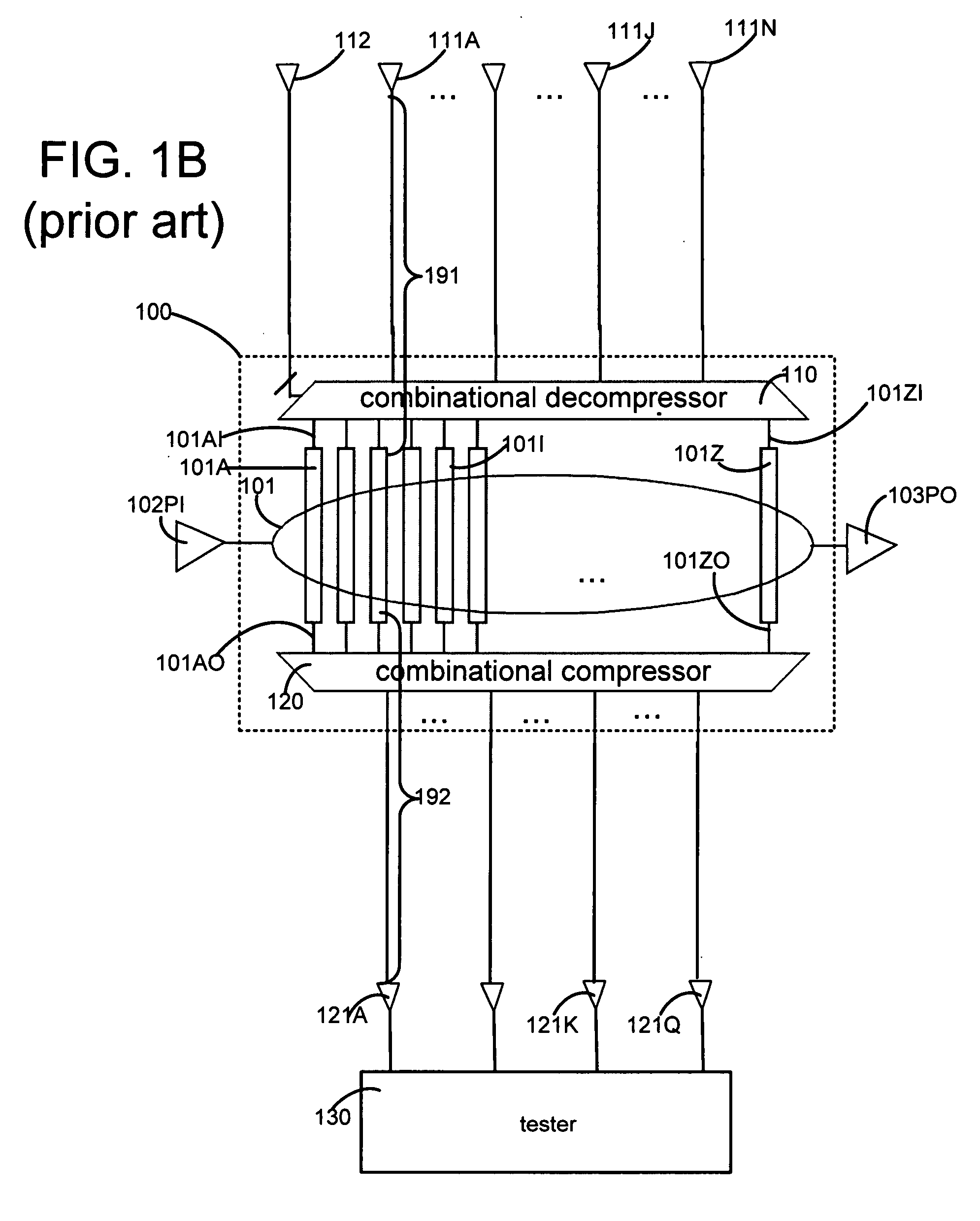Scan compression circuit and method of design therefor
a compression circuit and integrated circuit technology, applied in the direction of instruments, pulse techniques, computation using denominational number representation, etc., can solve the problems of increasing the number of xs per shift, significant part of the cost of electronic system design, manufacture and service,
- Summary
- Abstract
- Description
- Claims
- Application Information
AI Technical Summary
Benefits of technology
Problems solved by technology
Method used
Image
Examples
Embodiment Construction
[0050]An electronic device in several embodiments of the invention includes a scan compression circuit 200 (FIG. 2A) having a selector 230 that is operable on a per-shift basis, in multiple modes. Scan-based circuit 200 also includes a compressor 220 which has several groups 221A-221Z of lines that are coupled to selector 230. Compressor 220 is architected in the normal manner, i.e. under an assumption that lines in each group carry the same data, namely data extracted from a respective one of scan chains 101A-101Z in the electronic device. Typically, each line within a group is connected internally within compressor 220 to a different block (e.g. implemented by an XOR gate) which combines data from lines of different groups. Hence, a compressor 220 which is used with selector 230 of some embodiments may be similar or identical to any compressor in the prior art, such as compressor 120 of FIG. 1D.
[0051]However, selector 230 does not supply identical signals to all lines within a gro...
PUM
 Login to View More
Login to View More Abstract
Description
Claims
Application Information
 Login to View More
Login to View More - R&D
- Intellectual Property
- Life Sciences
- Materials
- Tech Scout
- Unparalleled Data Quality
- Higher Quality Content
- 60% Fewer Hallucinations
Browse by: Latest US Patents, China's latest patents, Technical Efficacy Thesaurus, Application Domain, Technology Topic, Popular Technical Reports.
© 2025 PatSnap. All rights reserved.Legal|Privacy policy|Modern Slavery Act Transparency Statement|Sitemap|About US| Contact US: help@patsnap.com



